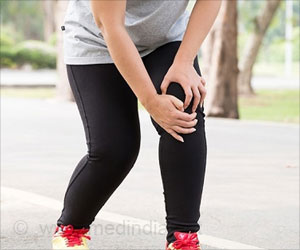Discovering the Impact of Hyaluronic Acid on Synovial Joints: A Study on Lubrication in Osteoarthritis and Its Implications.
- Synovial joints have a cavity filled with viscous synovial fluid to reduce friction between joint bones
- Osteoarthritis involves degeneration of cartilage tissue at synovial joints due to changes in synovial fluid composition
- New study explores how changes in synovial fluid composition influence joint wear and tear by affecting its ability to form a thick, lubricating film on articular cartilage tissue
What is Synovial Fluid?
One of the three major types of joints is synovial joints. Synovial joints, unlike other types of joints, are distinguished by the presence of a hollow filled with synovial fluid at the contact between the two articulating bones. A layer of cartilage covers the surface of the bones that form a synovial joint. The presence of synovial fluid at the joint decreases friction between the cartilage and permits unrestricted movement between the bones during movements.The viscous fluid known as synovial fluid is made up of hyaluronic acid, phospholipids, and lubricin. Hyaluronic acid is a polysaccharide (complex sugar), whereas phospholipids are fatty acids that are found in cell membranes. These phospholipids can self-assemble into bilayers, double-layered membranes, or vesicles, which are fluid-filled sacs surrounded by a lipid membrane. Phospholipids can form a film around the cartilage layer, reducing joint friction.
Furthermore, hyaluronic acid can attach to these phospholipids and perhaps impact their lubricating qualities. However, evidence for the role of hyaluronic acid in synovial fluid in lubricating the articulating bone border has been inconsistent.
What is Osteoarthritis?
Osteoarthritis is a degenerative disease that causes damage to the cartilage layer that covers the articulating bones. Furthermore, osteoarthritis is related to changes in the composition of synovial fluid, which alters its lubricating characteristics and promotes cartilage loss. Osteoarthritis is caused by the breakdown of longer chains of high molecular weight hyaluronic acid polymer into shorter chains of lower molecular weight. In osteoarthritis, the content of hyaluronic acid is also reduced tenfold. Scientists do not fully understand how changes in the composition of synovial fluid in a sick condition affect its lubricating qualities.Effect of Hyaluronic Acid on Synovial Joints
The current study used laboratory procedures to investigate the effect of hyaluronic acid concentration and molecular weight on its ability to form a complex with phospholipids. They discovered that the concentration and molecular weight of hyaluronic acid affected the structure of phospholipid-hyaluronic acid bilayer membranes in a buffer solution.The researchers then investigated the properties of films generated by hyaluronic acid-phospholipid assemblies on a gold sensor surface. When high molecular weight hyaluronic acid was mixed with phospholipids, a thick, continuous, disordered or amorphous layer formed on a gold surface. The thickness of the film was reduced as the concentration of high molecular weight hyaluronic acid was increased.
An amorphous thick layer of this type is thought to effectively lubricate the synovial joint movement. Furthermore, such a coating is more likely to preserve its integrity and be resistant to wear and tear, protecting the articulate cartilage tissue more efficiently. The interaction of low molecular weight hyaluronic acid with phospholipids, on the other hand, inhibited the creation of a thick coating on the gold surface.
These findings imply that the breakdown of hyaluronic acid, which results in a decrease in molecular weight, as seen in osteoarthritis, may increase friction and wear and strain on articular cartilage.
Rosa Maria Espinosa-Marzal, a professor at the University of Illinois at Urbana-Champaign and co-author of the study, stated, "Our findings show that low molecular weight hyaluronic acid, which mimics osteoarthritic joints, inhibits hyaluronic-acid-lipid complex adsorption." The absence of an amorphous film on the surface may be a result of osteoarthritis, as this film should assist minimize friction and wear."
Dr. Jacob Klein, a professor at Israel's Weizmann Institute of Science, cautioned, however, that the study does not directly prove a link between potential changes in synovial fluid composition and their impact on lubricating characteristics.
“I would have liked to see friction experiments to correlate with their structural measurements, which they didn’t do; so it is not completely clear to me what are the direct implications for lubrication,” Dr. Klein noted.
Source-Medindia
















